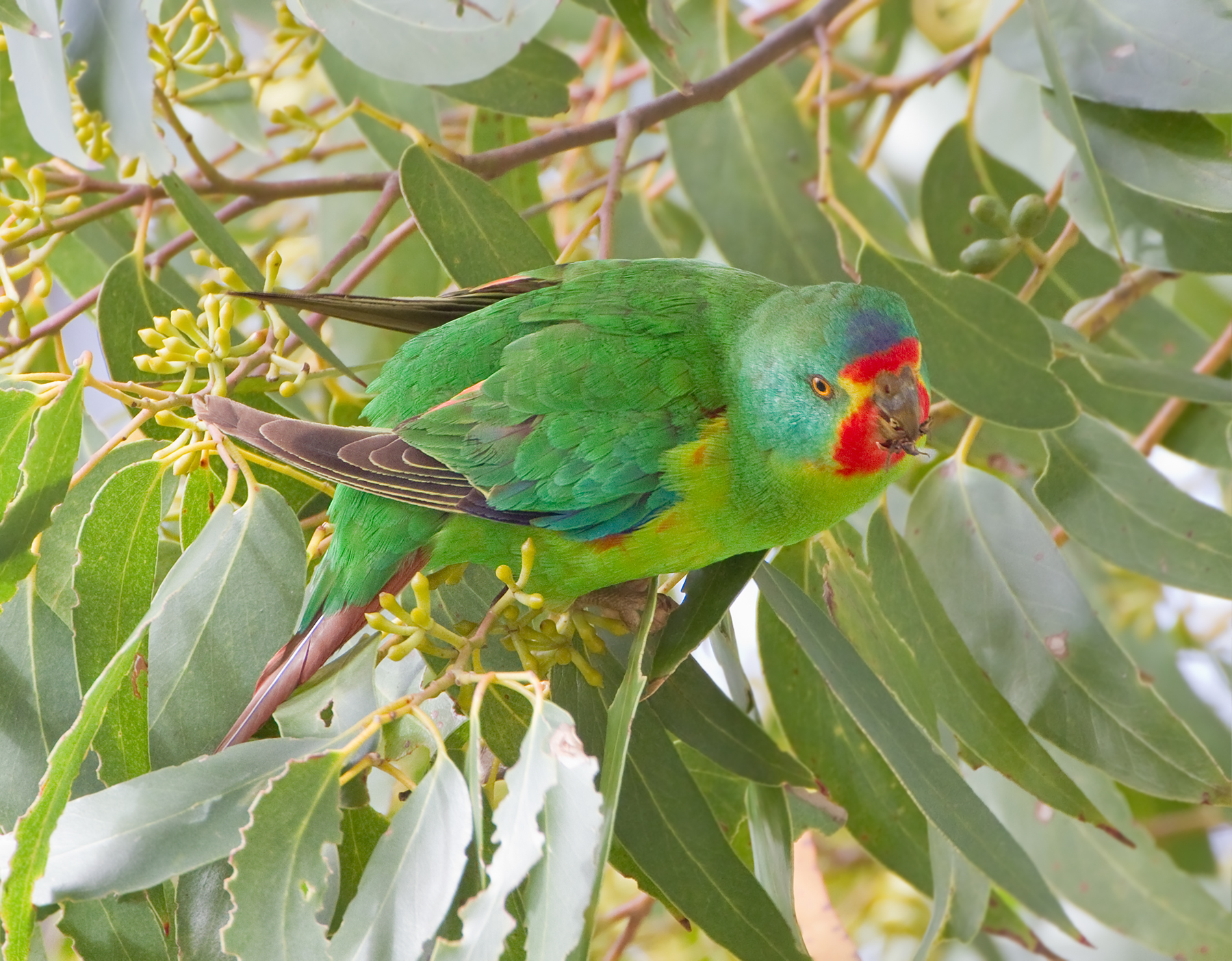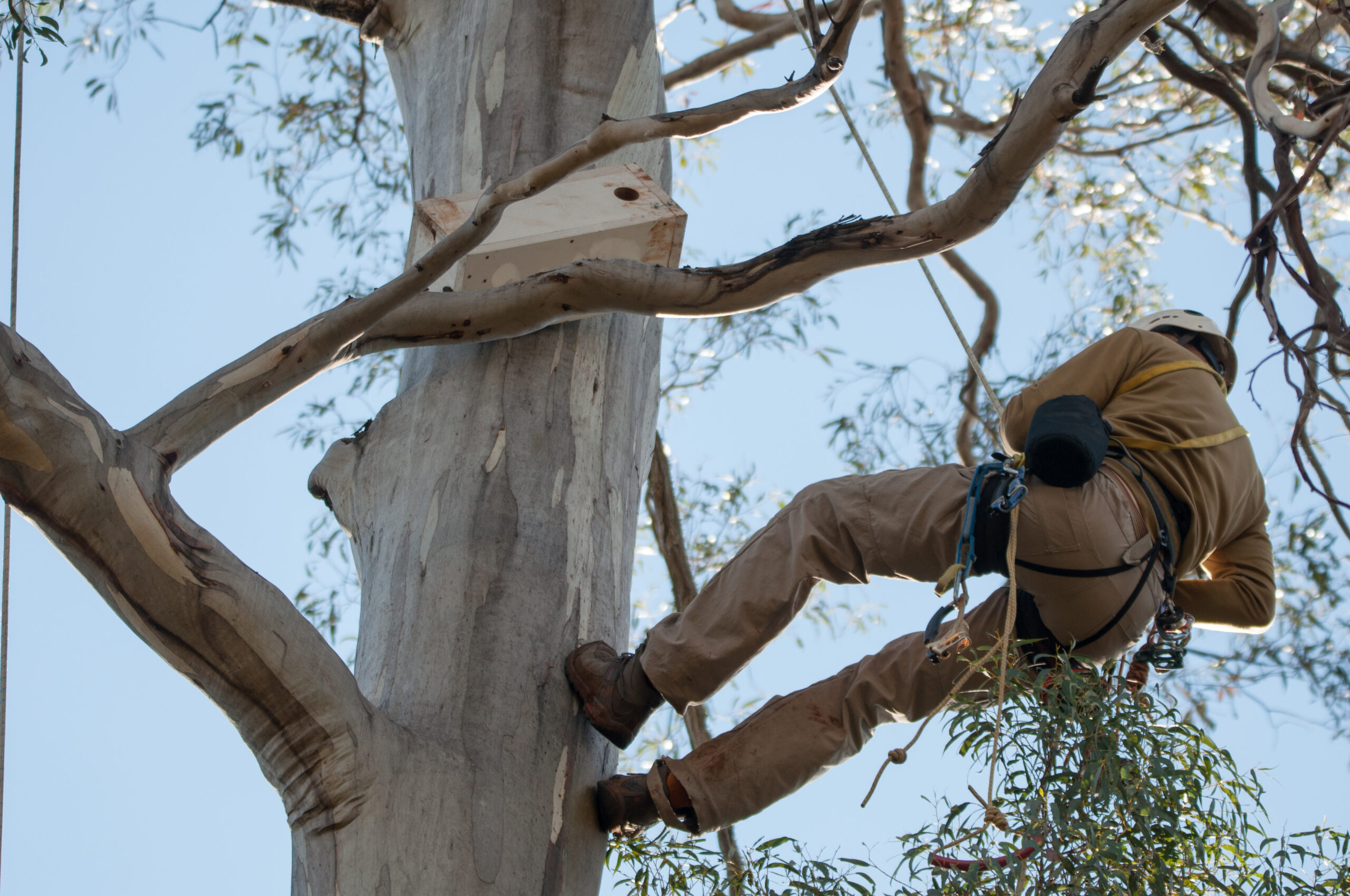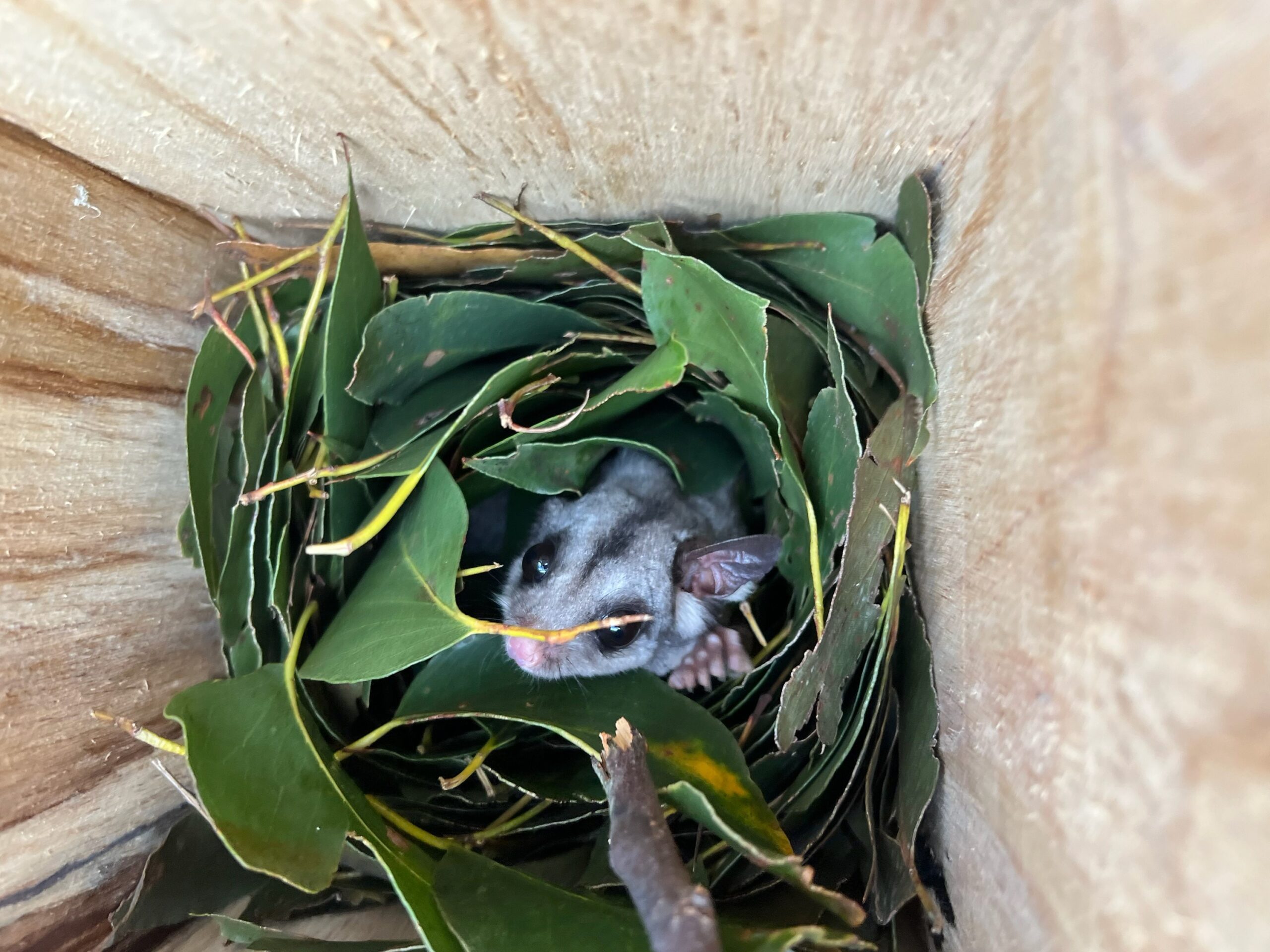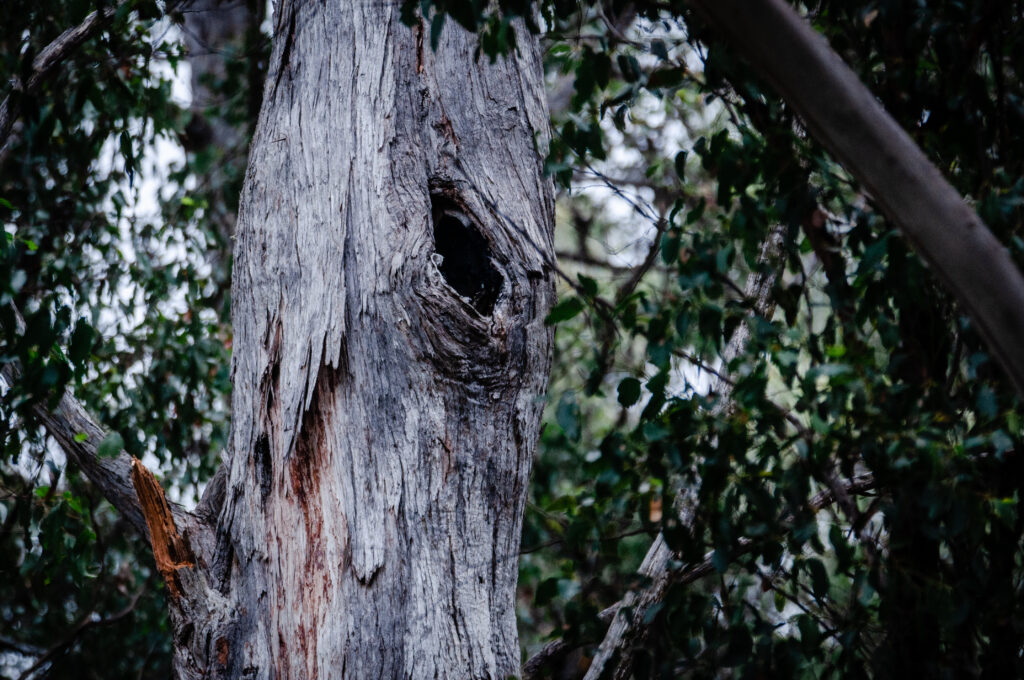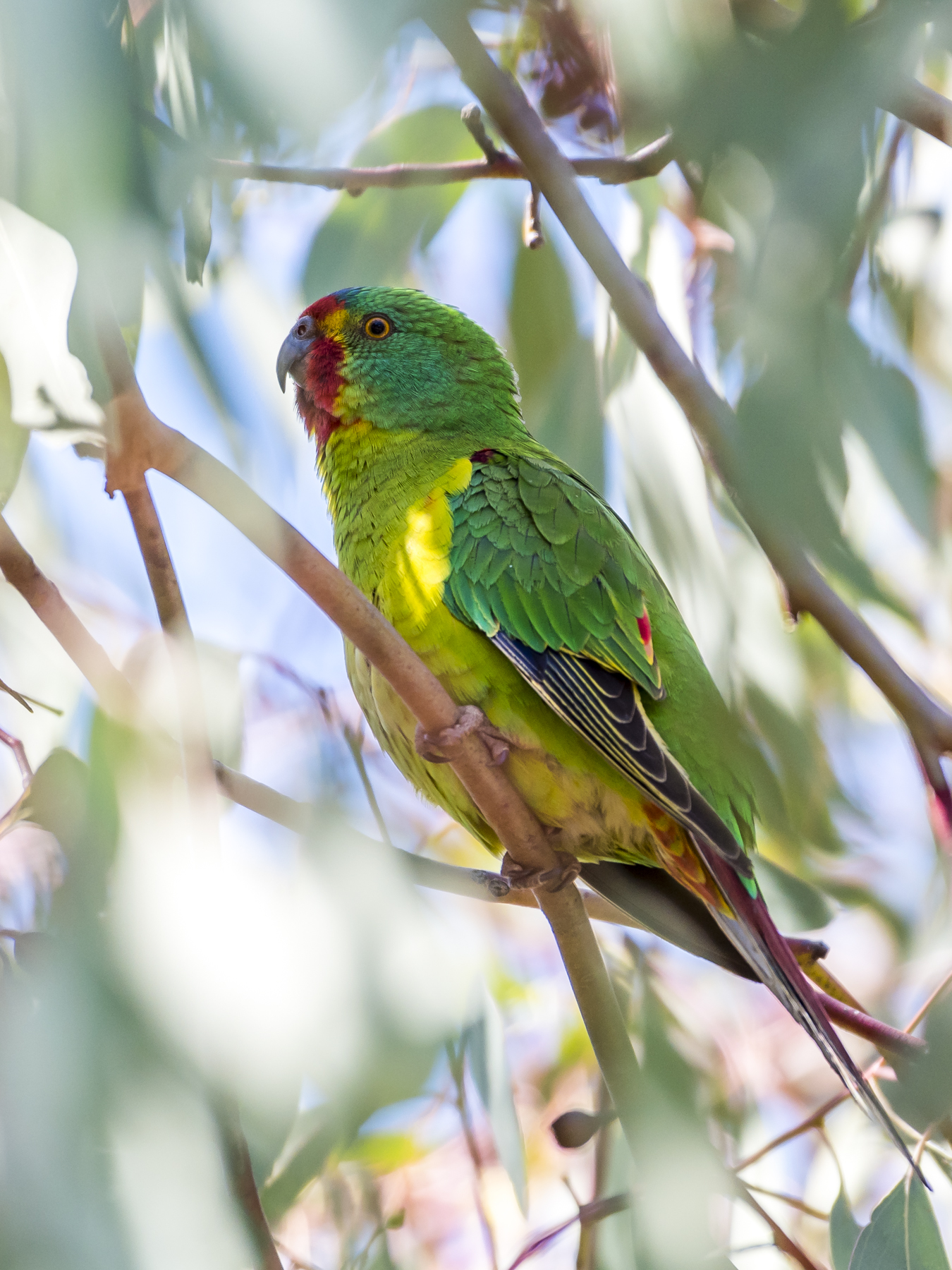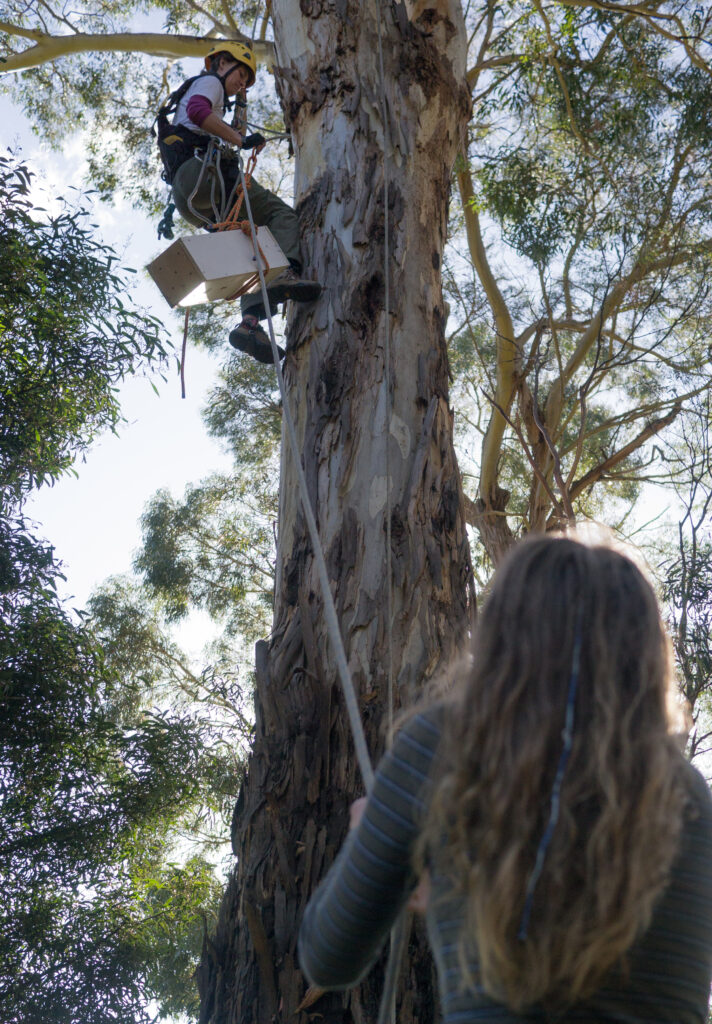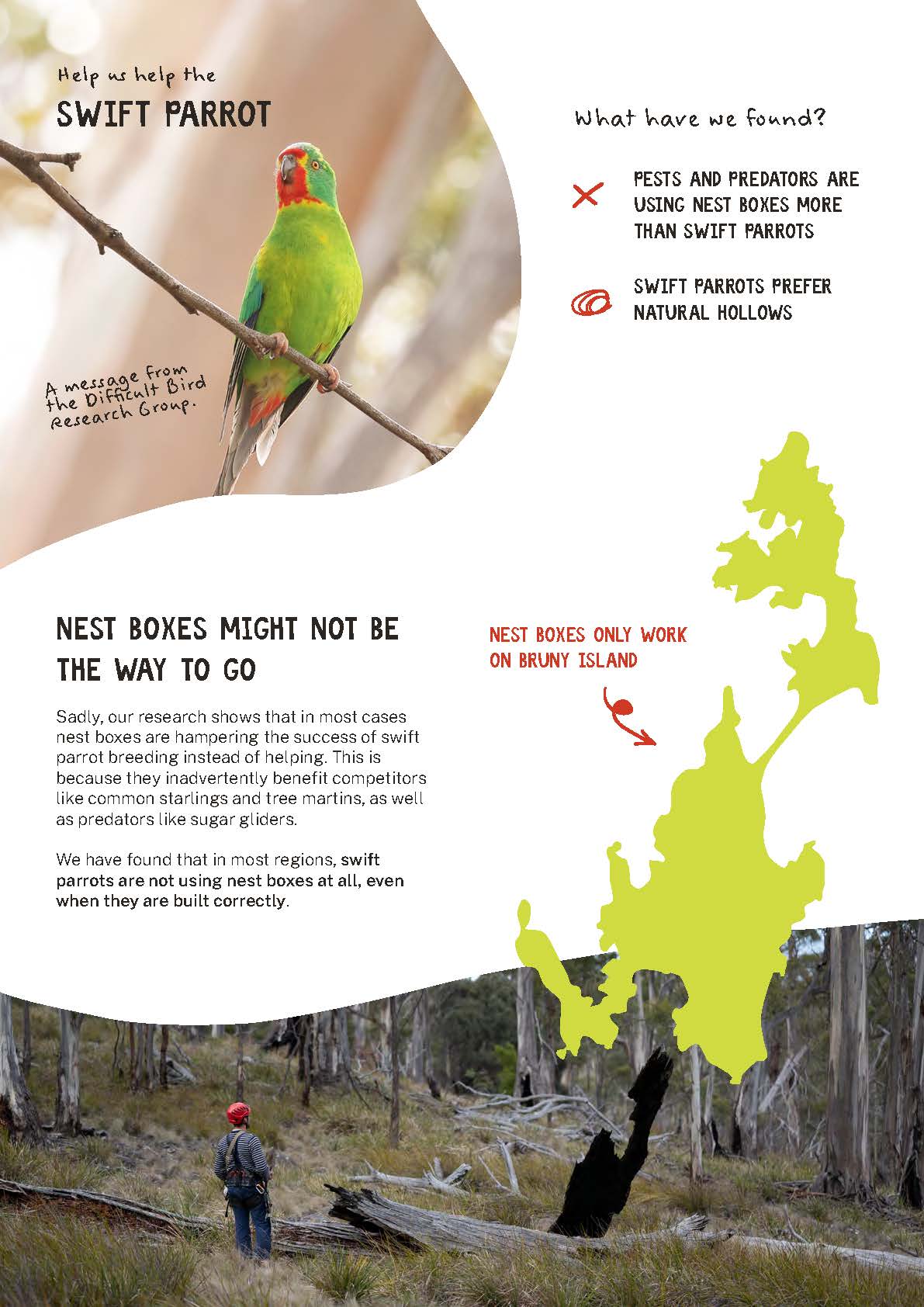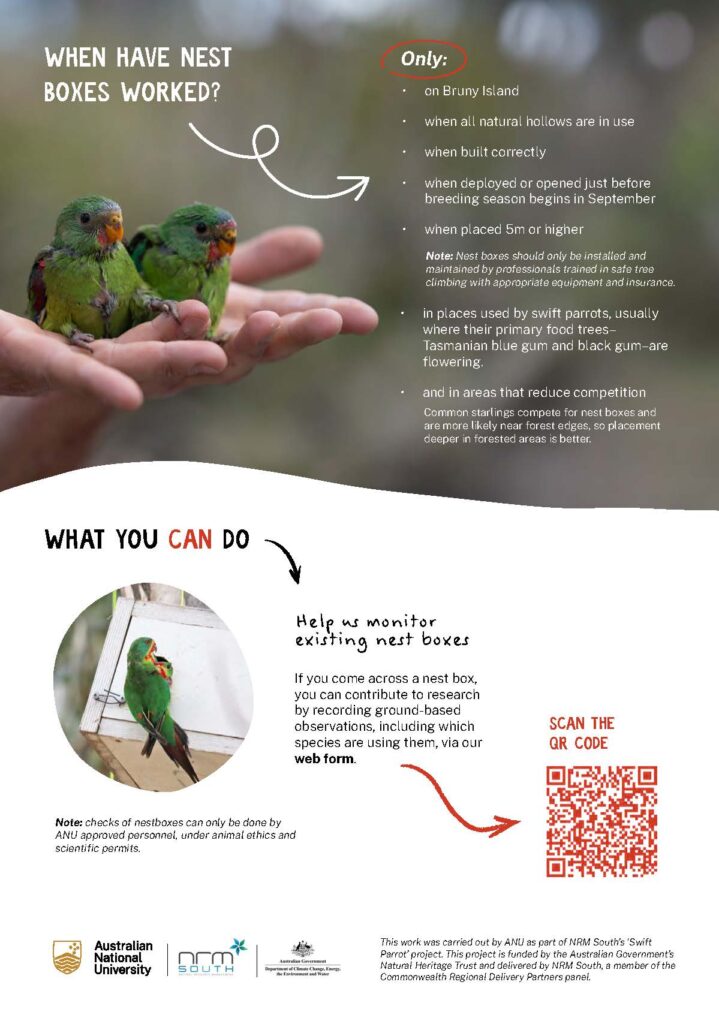Nest boxes can be a useful tool in threatened bird conservation. By providing additional roosting and breeding sites, nest boxes can help support threatened bird populations in areas where their habitat has declined. However, recent research the Difficult Birds Research Group into nest box use by Swift Parrots has highlighted that this approach isn’t a ‘one size fits all’ solution. Habitat decline brings with it a loss of available nesting sites – particularly for species that nest in tree hollows, such as the Swift Parrot. While a lack of nesting sites can sometimes be addressed by introducing nest boxes, this approach can also bring risks.
Research carried out by experts at the ANU’s Difficult Birds Research Group, as part of NRM South’s Saving Swift Parrots project, has shown that nest boxes are only useful on Bruny Island and can often cause more harm than good.
Pests and predators use nest boxes more than Swift Parrots
Swift Parrots prefer natural tree hollows and will only use nest boxes when all hollows are taken
Nest boxes are only useful on Bruny Island
Swift Parrots will only use nest boxes that have specific dimensions and that are placed above a certain height
What does this mean? The main takeaway is that habitat conservation remains the best approach for safeguarding the future of this species, including through reserves, conservation covenants and preserving important hollow-bearing trees.
This project is funded by the Australian Government Natural Heritage Trust and delivered by NRM South, a member of the Commonwealth Regional Delivery Partners panel.
